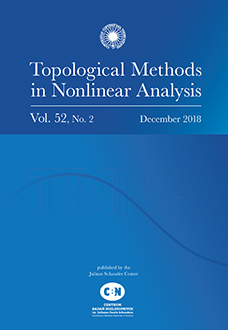Abstract
We compute a primary cohomological obstruction to the existence of an equipartition for $j$ mass distributions in $\mathbb{R}^d$ by two hyperplanes in the case $2d-3j = 1$. The central new result is that such an equipartition always exists if $d=6\cdot 2^k +2$ and $j=4\cdot 2^k+1$ which for $k=0$ reduces to the main result of the paper P. Mani-Levitska et al., Topology and combinatorics of partitions of masses by hyperplanes, Adv. Math. 207 (2006), 266-296. The theorem follows from a Borsuk-Ulam type result claiming the non-existence of a $\mathbb{D}_8$-equivariant map $f \colon S^{d}\times S^d\rightarrow S(W^{\oplus j})$ for an associated real $\mathbb{D}_8$-module $W$. This is an example of a genuine combinatorial geometric result which involves $\mathbb{Z}/4$-torsion in an essential way and cannot be obtained by the application of either Stiefel-Whitney classes or cohomological index theories with $\mathbb{Z}/2$ or $\mathbb{Z}$ coefficients. The method opens a possibility of developing an ``effective primary obstruction theory'' based on $G$-manifold complexes, with applications in geometric combinatorics, discrete and computational geometry, and computational algebraic topology.
Citation
Rade T. Živaljević. "Computational topology of equipartitions by hyperplanes." Topol. Methods Nonlinear Anal. 45 (1) 63 - 90, 2015. https://doi.org/10.12775/TMNA.2015.004
Information





